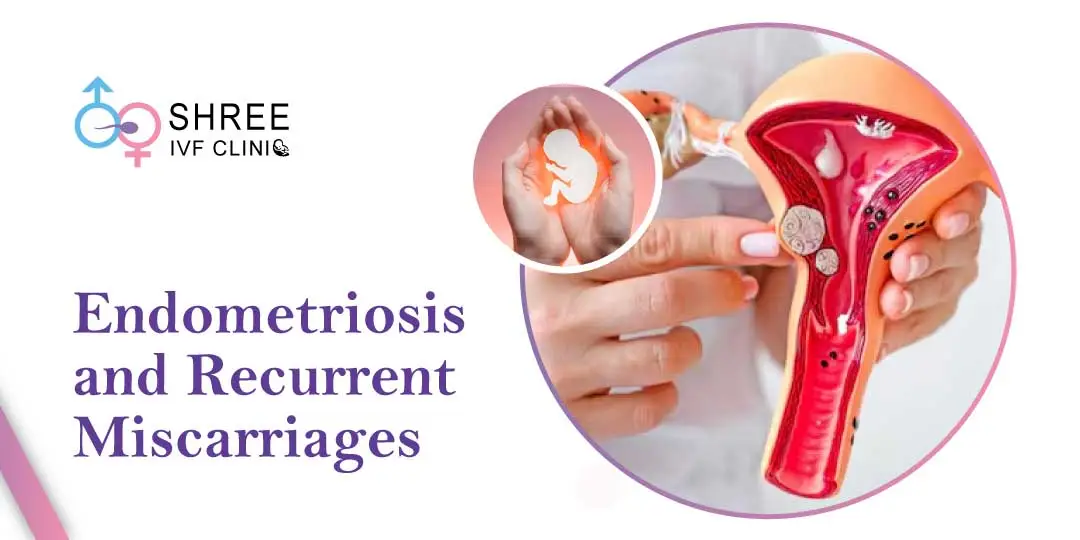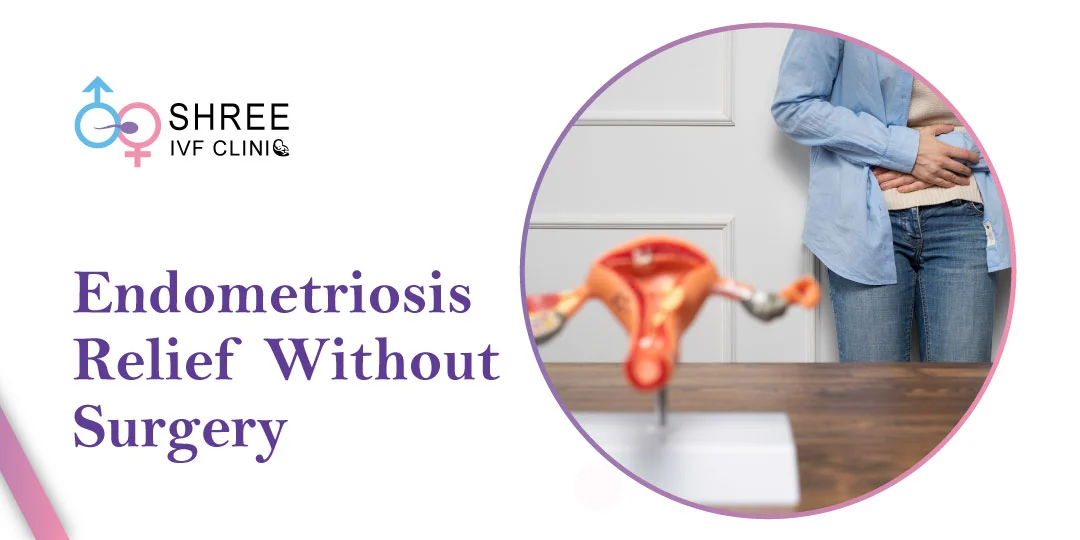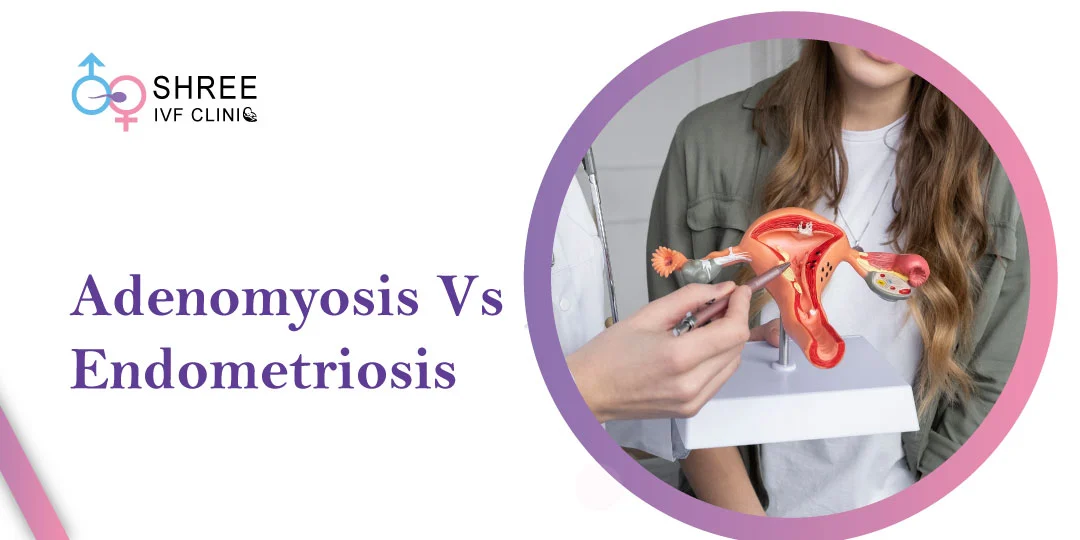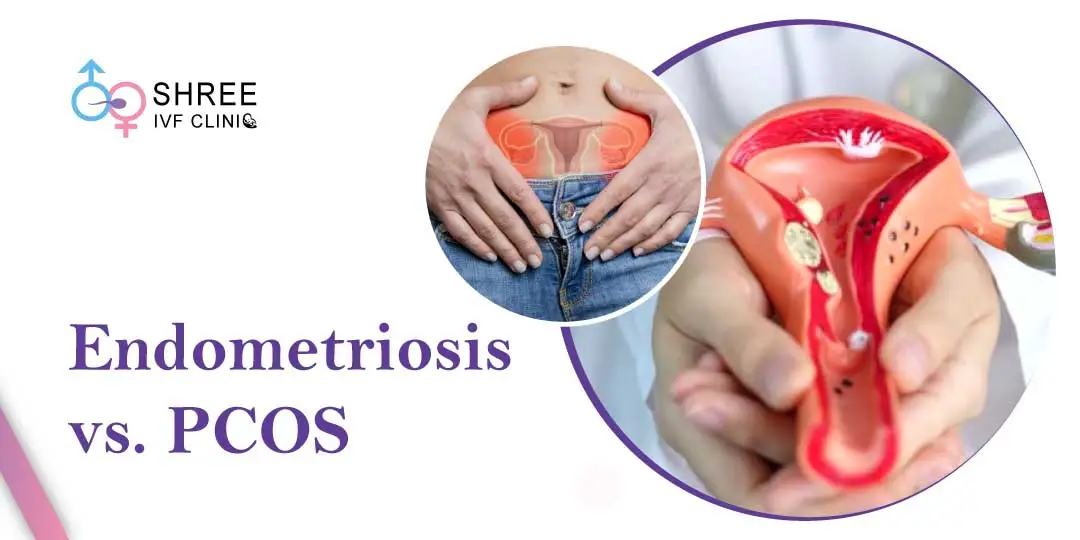Endometriosis and Recurrent Miscarriage: What’s the Connection?
UPDATED ON 16TH APR. 2025
The answer is yes—studies show that women with endometriosis are more likely to face repeated pregnancy losses than those without it.
I’m Dr. Jay Mehta, an IVF and infertility specialist, and also an endometriosis surgeon at Shree IVF Clinic in Mumbai. I’ve walked alongside many couples who are trying to start a family but keep facing heartbreak with miscarriages, and I know how confusing and upsetting it can be.
You might be feeling lost with all the mixed information out there, wondering why this keeps happening and what you can do.
In this article, I’ll explain what endometriosis is, how it might be connected to losing pregnancies again and again, and what steps we can take together to help you.
We’ll cover the science, real experiences from my clinic, and practical tips—all in one place—so you don’t have to search endlessly for answers.
My aim is to give you clarity, hope, and a way forward. Let’s dive in!

AUTHOR
Dr Jay Mehta
Scientific Director & IVF Specialist with 10+ years of experience
GET IN TOUCH ON
What Is Endometriosis?
Imagine your womb (uterus) has a soft lining inside it, like a cosy blanket.
Every month, this blanket thickens to welcome a baby, and if no baby comes, it sheds as your period.
Now, endometriosis is when bits of this blanket start growing outside your womb—on your ovaries, tubes, or even your bowels. These bits act like the real lining—they grow and bleed every month—but there’s no way for the blood to leave your body. This can cause pain, swelling, and sometimes scars inside your belly.
In India, about 1 in 10 women deal with endometriosis, and many don’t even know they have it because the signs, like painful periods or tummy aches, can seem normal.
But when you’re trying to have a baby, endometriosis can make things trickier, especially if you’ve lost pregnancies before.
What Does Recurrent Miscarriage Mean?
A miscarriage is when a pregnancy ends on its own before the baby can survive outside—usually before 20 weeks. If this happens two or more times, we call it recurrent miscarriage.
It’s like planting a seed that keeps wilting before it can grow into a plant, and it’s tough—I see how much it hurts couples who come to me.
About 1-2% of couples face this, and it’s natural to wonder, “Why us?”
Sometimes, there’s no clear answer, but endometriosis might be one piece of the puzzle.
How Are Endometriosis and Recurrent Miscarriage Connected?
Here’s the thing—endometriosis doesn’t just sit quietly. It stirs up trouble inside your body that can affect a pregnancy. Let me break it down simply:
- Swelling and Scars: Those extra bits of lining cause swelling (inflammation) and can leave scars. It’s like having rough patches in a garden where a seed struggles to take root. This can make it hard for a baby-to-be (embryo) to settle in your womb.
- Womb Changes: The swelling might mess with how your womb lining works, making it less welcoming for a pregnancy to grow strong.
- Hormone Trouble: Endometriosis can throw your hormones off balance, like a seesaw tipping too far one way, which might stop the womb from supporting a baby properly.
- Tube Problems: If scars block your fallopian tubes (the paths eggs travel), the embryo might get stuck outside the womb, leading to a loss.
Studies—like one from Denmark with nearly 30,000 women—show that women with endometriosis have a higher chance of miscarriage.
About 19% of pregnant women with endometriosis lose their babies, compared to 17% without it. And the risk grows with each loss—those with three or more miscarriages were over twice as likely to have endometriosis.
It’s not a sure thing for everyone, but it’s a link we can’t ignore.
Why Does This Happen?
Let’s dig a bit deeper into why endometriosis might cause these losses:
- Bad Environment: The swelling from endometriosis can make your womb feel like a stormy place, not calm and safe for a tiny embryo to grow.
- Immune Mix-Up: Your body might get confused and treat the pregnancy like something to fight off instead of something to protect.
- Poor Embryo Stickiness: The womb lining might not be sticky enough for the embryo to hold on, so it slips away.
- Adenomyosis Link: Sometimes, endometriosis comes with adenomyosis, where the womb lining grows into its muscle. This can make the womb twitchy, pushing the pregnancy out too soon.
A couple came to me at Shree IVF Clinic, Mumbai, after three miscarriages. She had painful periods for years, but no one connected it to endometriosis. We did a laparoscopy—a small camera check inside her belly—and found endometriosis patches.
After clearing them, she carried her next pregnancy to term. It’s not always this straightforward, but it showed me how hidden this link can be.
How Do We Find Out If Endometriosis Is the Culprit?
If you’ve had multiple miscarriages, I don’t just say, “Let’s try again.” We need to check what’s going on. Here’s how:
- Your Story: I’ll ask about your periods—are they painful? Heavy? Any tummy pain during sex or otherwise? These clues point to endometriosis.
- Ultrasound: A quick scan to peek at your ovaries and womb for signs like cysts or scars.
- Laparoscopy: The best way—a tiny camera goes in through a small cut to see if endometriosis is there. It’s like a detective looking for evidence.
If we find it, we can plan what’s next. If not, we keep looking for other reasons—because you deserve answers.
Can Endometriosis Be Fixed to Stop Miscarriages?
Yes, there’s hope! Treating endometriosis might lower your miscarriage risk and help you carry a baby. Here’s what we can do:
1. Medicines
Pills or injections can calm the swelling and shrink those extra bits of lining. It’s like turning down the heat on a boiling pot—it doesn’t fix the pot, but it stops the overflow. This might help your womb get ready for pregnancy.
2. Surgery
I specialize in laparoscopy—using a tiny camera and tools to remove endometriosis patches. It’s like weeding a garden to give your plants room to grow. Studies show this can cut miscarriage chances by clearing the trouble spots.
3. IVF
If natural pregnancy keeps failing, we can make a baby outside your body (IVF) and place it in your womb. It’s like planting a strong seedling directly in good soil. At Shree IVF Clinic, we’ve seen success rates of 40-50% per cycle for women with endometriosis.
A woman in her 30s had four losses and endometriosis all over her pelvis. We did surgery to clear it, then in vitro fertilization (IVF). She’s now a mom to twins. It took teamwork, but seeing her smile made it worth it.
Does Everyone With Endometriosis Lose Pregnancies?
No, not at all!
Many women with endometriosis have healthy babies without any trouble.
It depends on how bad the endometriosis is—mild cases might not cause issues, but severe ones with lots of scars or swelling are more likely to.
Your age and overall health matter too. That’s why we check each person individually.

4,790+
379K+
What Else Could Cause Recurrent Miscarriages?
Endometriosis isn’t the only reason for repeated losses. Other possibilities include:
- Chromosome Problems: The baby’s building blocks might not line up right.
- Hormone Imbalance: Not enough support for the pregnancy to grow.
- Blood Clotting: Tiny clots might block the baby’s food supply.
- Womb Shape: An odd shape might not hold the pregnancy well.
We test for these too, so we don’t miss anything.
How Can You Help Yourself?
You’re not powerless here. Small changes can support your body:
- Eat Healthy: More fruits, veggies, and whole grains—like dal and roti—keep you strong.
- Stay Active: A daily walk or yoga boosts blood flow and cuts stress.
- Rest Well: 7-8 hours of sleep helps your body heal.
- Avoid Smoking: It makes things worse for your womb and eggs.
Checklist for Today:
- Add a banana or guava to your breakfast.
- Take a 15-minute walk after dinner.
- Skip that extra cigarette or late-night TV.
What’s the Emotional Side Like?
I know this isn’t just about your body—it’s your heart too. Losing pregnancies again and again feels like a storm that won’t stop. You might feel scared, sad, or even blame yourself (please don’t—it’s not your fault). Talk to your partner, a friend, or me—I’m here to listen. Some couples find comfort in support groups too.
Why See Me at Shree IVF Clinic?
As an endometriosis specialist in India with 10+ years of experience, I’ve helped countless couples overcome infertility because I believe in care beyond treatment.
At Shree IVF Clinic in Mumbai, we use the latest tools, like 3D laparoscopy, to tackle endometriosis with precision. Whether it’s surgery or IVF, I’ll sit with you, explain everything, and find what works for you. You’re not just a patient—you’re family.
Your Next Steps: Let’s Find a Way Forward
Here’s what you can do right now:
- Count Your Losses: How many miscarriages? Two or more means we should talk.
- Notice Signs: Painful periods or tummy aches? Jot them down.
- Reach Out: Call me at 1800-268-4000, Shree IVF Clinic — let’s figure this out together.
- Start Small: Try one healthy habit today, like drinking more water.
You’re reading this because you want a baby, and I’m here to help make that happen. This article has all you need—no running around for bits of info.
If you’re still unsure, let’s chat—I’ll keep it simple and honest so you can take the next step with confidence.
AUTHOR
Dr Jay Mehta
Scientific Director & IVF Specialist with 10+ years of experience
CALL US 24/7 FOR ANY HELP
GET IN TOUCH ON
Share Article on
Recommended Reading
How To Cure Endometriosis Without Surgery?
Endometriosis symptoms can be managed without surgery. Medications, natural remedies, and lifestyle changes help to manage symptoms
Difference Between Adenomyosis and Endometriosis
Endometriosis causes tissue to grow outside the uterus, while adenomyosis leads to growth within the uterine muscle
Endometriosis vs. PCOS: What’s the Difference?
PCOS causes irregular or absent periods due to a hormone imbalance and high insulin/male hormones, while endometriosis causes painful periods without hormone imbalance




